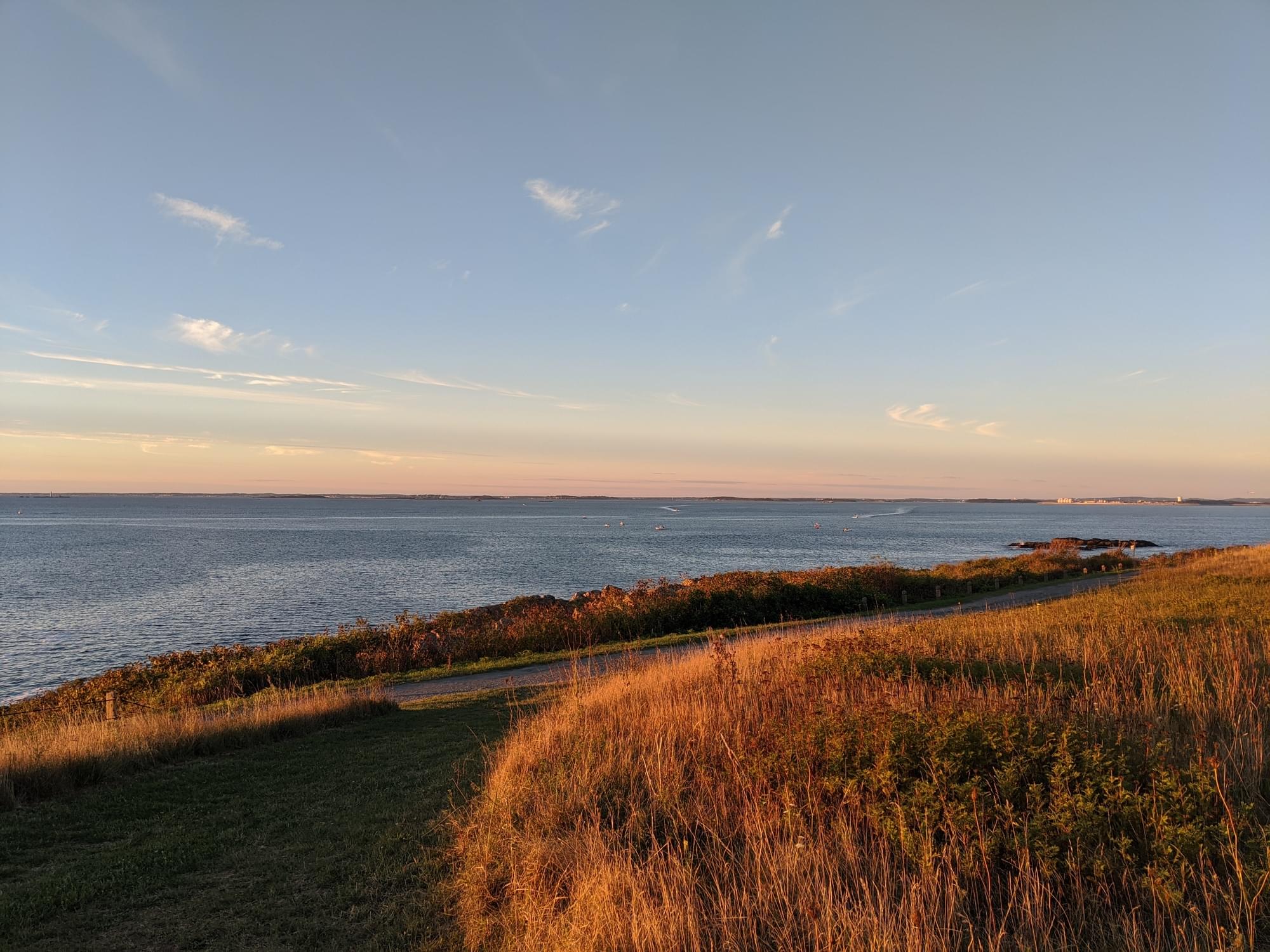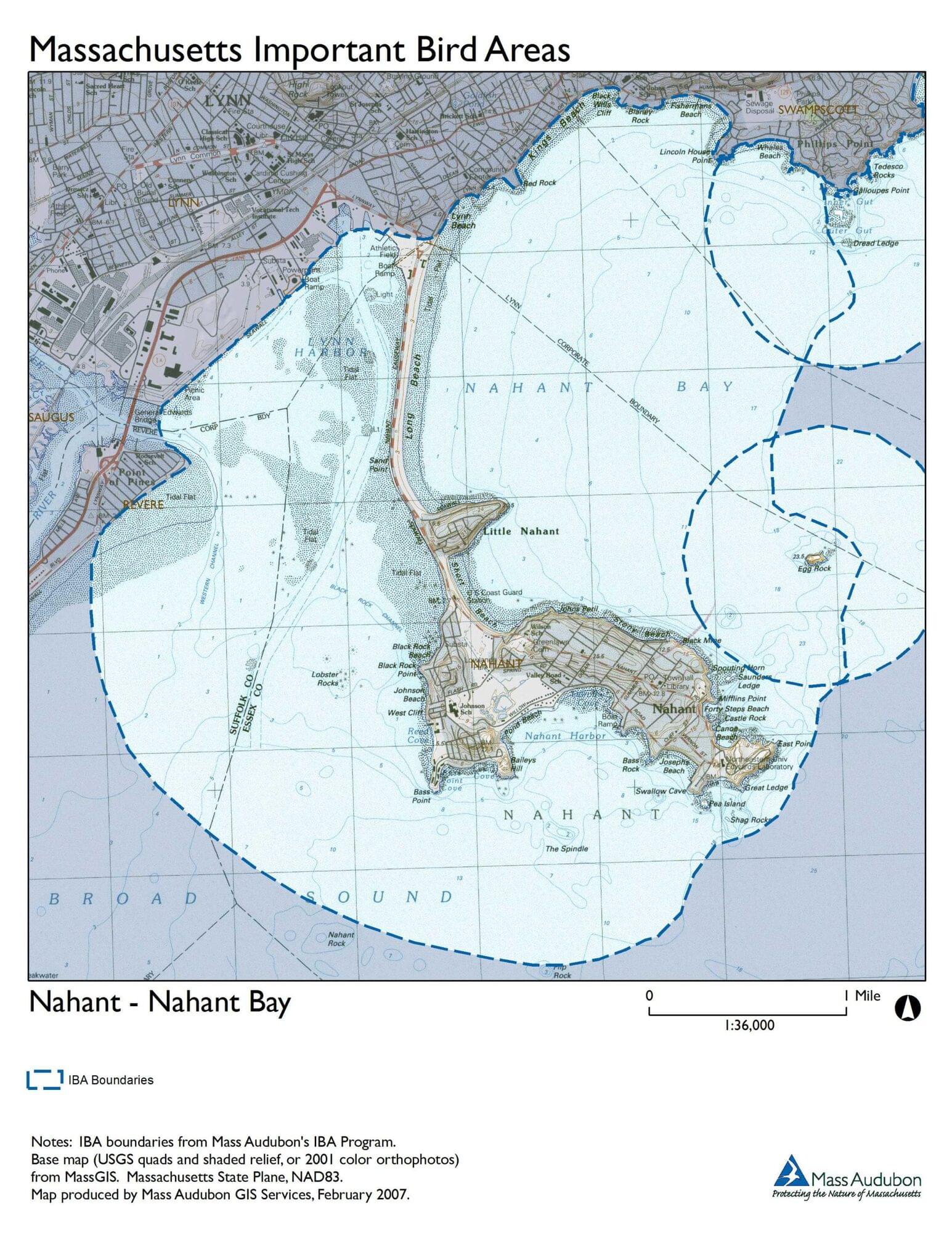Nahant--East Point Headland

Nahant--East Point Headland
Nahant, Massachusetts 01908
Nahant Bay Important Bird Area Official WebsiteNahant Bay Important Bird Area map
About this Location
East Point Headland has panoramic views of the Atlantic Ocean, Boston Harbor, and the Boston skyline. The headland is home to the Marine Science Center, a research and education facility of Northeastern University. The center conducts studies on marine biology, ecology, and oceanography, and hosts public programs and events throughout the year. East Point Headland is a popular destination for nature lovers, birdwatchers, photographers, and history buffs. It is accessible by car, bike, or foot, and has parking and restrooms available. Visitors can enjoy the trails, picnic areas, and observation decks, or explore the remnants of Fort Ruckman, a coastal defense fortification built in 1898. The Henry Cabot Lodge House is on East Point.
East Point, at the end of Nahant Road, is the easternmost extension of Nahant.
About Nahant Bay Important Bird Area
See all hotspots at Nahant Bay Important Bird Area
Nahant is essentially an island with a predominantly rocky shoreline connected to the mainland by a rather narrow tombolo along which runs a causeway. The main portion of Nahant lies roughly three miles southeast of the mainland and is well-treed but heavily developed, except for a swampy vegetated lowlands area, a golf course, two undeveloped headlands, a cemetery, several small woodlots, and a small thicket owned by Mass Audubon. Slightly closer to the mainland lies the heavily developed Little Nahant, connected to the main portion of Nahant by a three-quarter-mile stretch (Short Beach). Nahant Beach (also known as Long Beach) connects the upland portion of Nahant to the mainland at the Lynn shore. This broad, gradually sloping, and sandy beach stretches for some two miles in length. It is backed by a narrow strip of low dunes (adjacent to the causeway), which is vegetated with traditional dune community plants, including Beach Plum, Beach Rose, bayberry, and dune grass, many of these recently reintroduced. The Lynn shore and Swampscott portions are sandy beaches closely backed by a large concrete seawall. At the eastern edge of Nahant Bay, north of East Point, lies Egg Rock, a towering granite ledge. Large algal blooms in Nahant Bay create a thick soupy consistency to the surf in some areas, regularly attracting thousands of shorebirds and Bonaparte’s Gulls.
The Nahant Bay area contains diverse habitats, including sandy beaches, mudflats, mussel beds, a large shallow bay, rocky shorelines, brushland, and thickets. These attract a wide array of bird species including several that occur as migrants and are considered endangered, threatened, or of special concern. Lynn Harbor, which lies on the west side of the causeway, has mudflats and extensive mussel beds exposed at low tide, which attract large flocks of Common Eiders. Thousands of shorebirds and gull species are attracted to the shallow bay and beaches. The bay also hosts large flocks of sea and diving ducks from fall through spring, and a substantial number of immature scoters summer in the area. Egg Rock has a large colony of nesting Double-crested Cormorants along with large gulls. The undeveloped and vegetated portions of Nahant provide habitat for migrant land birds, serving as a migrant trap, concentrating passerines in both spring and fall due to its insular location several miles off the southern Essex County coast. Large fallouts of neotropical and other migrants comparable to those occurring at Marblehead Neck often ensue, particularly in inclement weather.
Features
Restrooms on site
Wheelchair accessible trail
Roadside viewing
Entrance fee
Content from Nahant Bay Important Bird Area Official Website
Last updated January 26, 2024
